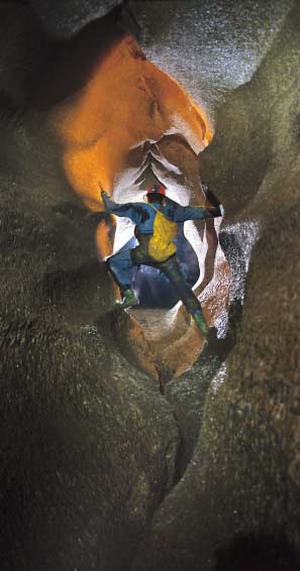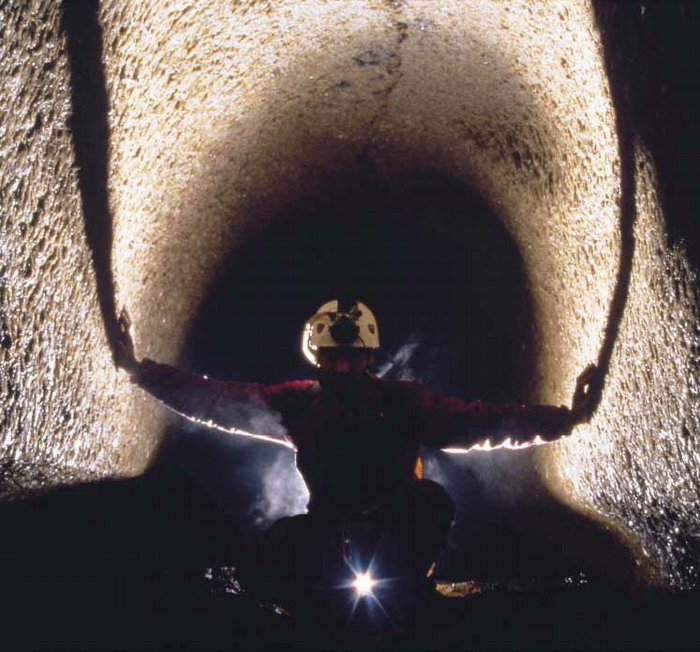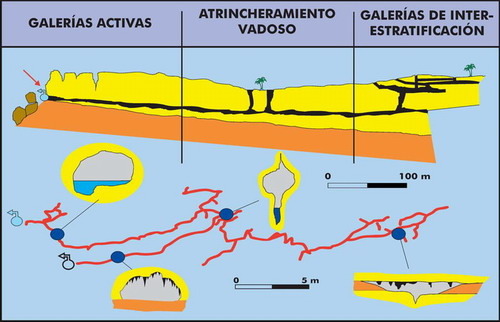
The Cueva del Agua or Marchalico Cave is one of the most emblematic of the Sorbas Gypsum Karst, and with good reason, since the cavities and passages are currently believed to be the most extensive in Andalusia and contain the biggest gypsum cave in the whole of Spain. The known galleries extend over more than 8 km in the interior of the gypsum. Situated in a karstic depression 1 km2 in size, continual speleological explorations have located more than 25 entrances into the system. Among the labyrinthine galleries runs an underground river which, on occasions, siphons the conduits completely, making exploration difficult and very dangerous. The Cueva del Agua is still being explored and it is possible that our current knowledge of the system may soon be out of date. This is a clear illustration of the tenacity of the speleological groups that have dedicated so much effort over the years to the Sorbas gypsum Karst.
The kinds of galleries that can be found in the Cueva del Agua correspond to different patterns of development (Figura 9). Within the active sector, where there is always flowing water, rounded cross-sections are frequently found, as well as speleothems made of calcium carbonate instead of gypsum (calcium sulphate). Close to the emergence of the spring and also in intermediate sections of the cavity are galleries whose origin is phreatic (i.e., they formed below the water level, while they were flooded). Further away from the main entrance are galleries of vadose origin (generated above the water level, once the galleries had been abandoned by the constant water flow).


Phreatic galleries in the Cueva del Agua System

Figura 9


In the vadose galleries of the Cueva del Agua System (SO-21) it is posible to find many examples of gypsum speleothems